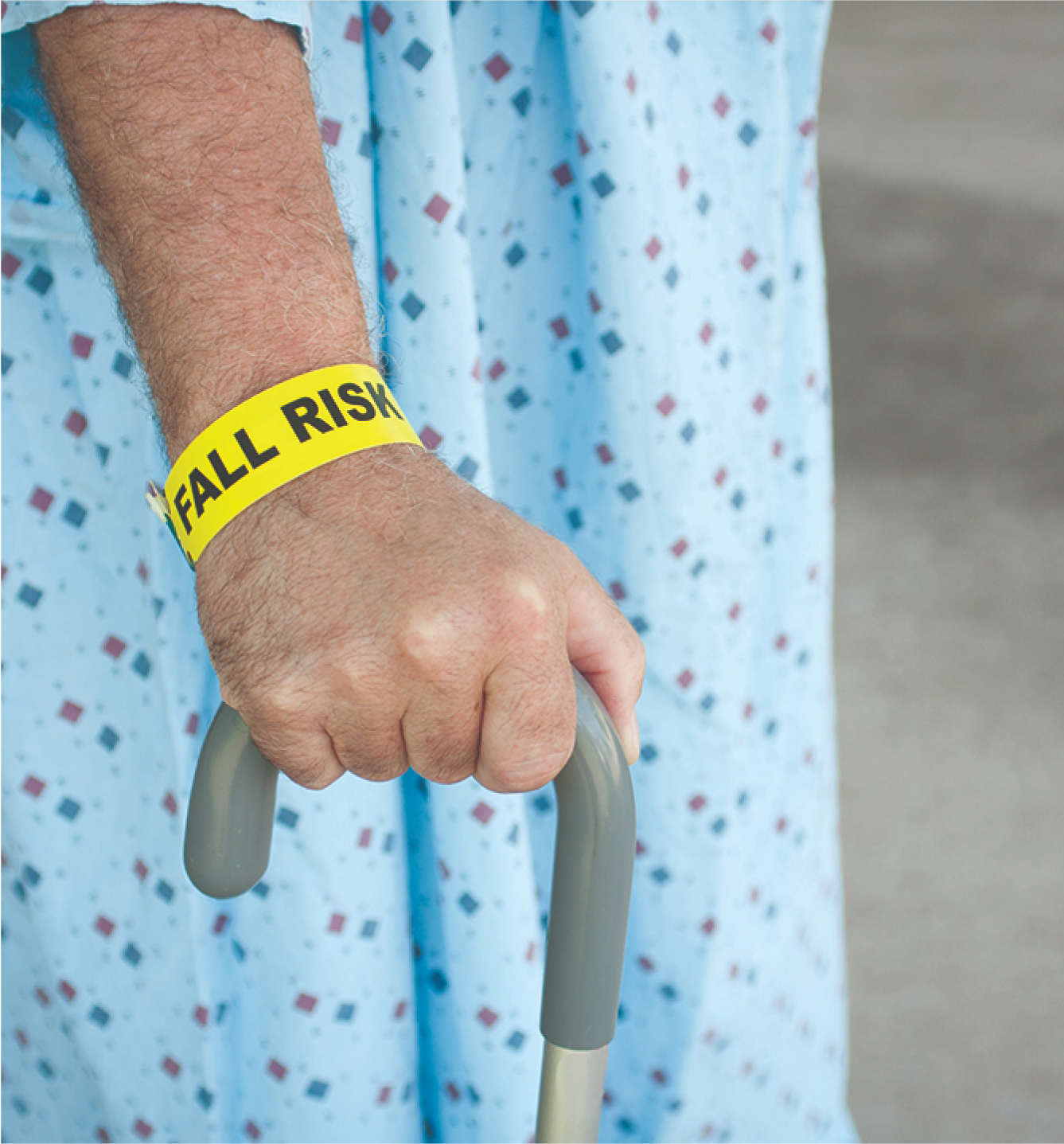Fall risk assessment: who is at risk and why?

Falls are a major patient safety issue. Each year, one in four adults age 65 or older will fall. Falls are the leading cause of moderate and severe injury and can even result in death.¹ If a patient sustains an injury from a fall, it is considered a hospital-acquired condition.³ According to the CDC, the estimated medical cost of falls in the US is $50 billion, annually.³ Falls are serious and very costly—but can be prevented by implementing best practices.
1 in 4
Each year, one in four adults age 65 or older will fall
$50 billion
The cost of falls in the US, annually
What makes patients at risk for falling?
There are two major types of factors that need to be considered when assessing the risk level of falls for a patient. Intrinsic, or physiological, factors that the patient has, such as normal effects of aging or comorbitities. Extrinsic factors are things within the health system that could put the patient at risk for falls.
Examples of intrinsic factors to be aware of:
- Gait or balance impairment—slow reaction time, shorter step lengths or limited range of motion
- Gait or balance impairment—slow reaction time, shorter step lengths or limited range of motion
- Certain medications—side effects that may cause dizziness or confusion
- Sensory impairment—decreased vision or hearing
- Changes in vital signs—lower blood pressure, pulse or blood oxygen levels
- Changes in mental status
Examples of extrinsic factors to be aware of:
- Room environment—poor or dim lighting, insufficient handrails, personal items in hard to reach places
- Improper use of assistive devices—lack of safe patient handling equipment used or available, missing parts, inaccessibility to devices
- Personal safety—inappropriate slippers, lack of designation of falls risks through clothing and wrist bands
How you can help:
A fall can easily be prevented by using a variety of best practices. Here are three easy ways you can help prevent falls from occurring within your organization:
1. Provide a safe environment
- Place the call light and bedside table within the patients reach
- Ensure there is proper lighting in the room during the day and nighttime
- Keep the bed in the lowest position
- Ensure that the floor is clutter-free and clean (no spills)
2. Identify the patient’s risk
- Complete a fall risk screening assessment upon patient admission, shift change, transfer or change in patient condition
- Identify if the patient has had a previous history of falls, and complete a neuro exam (assessing for confusion, or impaired judgment)
- Assess the patient’s mobility level and ensure a gait belt is available at the patient’s bedside to aide in ambulation
- Understand if the patient has a history of urinary incontinence or frequency
- Review the patient’s medications and consult the care team if the patient is on medications that may place them at risk
3. Tailor interventions based on the patient’s risk
- Check on your patient hourly to comply with universal fall precautions
- Place non-skid slippers or footwear on the patient
- Ensure that the patient moves slowly, when changing positions, to avoid orthostatic hypotension or syncope
- Encourage the patient to complete range-of-motion exercises to improve balance and mobility
- Use a bed or chair alarm if warranted based on the patients fall risk
- Educate the patient and caregivers to use the call light before getting up
Medline can help standardize processes to address key risk factors for falls management. Schedule a discovery assessment today for environmental observations and surveys to see where you stand today. Not only do we look at falls management, but also safe patient handling and safe mobility from a holistic perspective. Together, these help promote patient and staff safety.
References:
1. Centers for Disease Control and Prevention. (2017). “Important facts about falls.” Retrieved from: https://www.cdc.gov/HomeandRecreationalSafety/Falls/adultfalls.html
2. American Geriatrics Society & British Geriatrics Society. (2010). AGS/BGS clinical practice guideline: Prevention of falls in older persons. New York, NY: American Geriatrics Society.
3. Jarrett, N., & Callaham, M. (2016). “Evidence-based guidelines for selected hospital-acquired conditions: Final report” https://www.cms.gov/Medicare/Medicare-Fee-for-Service-Payment/HospitalAcqCond/Downloads/2016-HAC-Report.pdf
4. Ganz, D. A., et al. (2013). Preventing falls in hospitals: A toolkit for improving quality of care (AHRQ Publication No. 13-0015-EF). Rockville, MD: Agency for Healthcare Research and Quality. Retrieved from: https://www.ahrq.gov/professionals/systems/hospital/fallpxtoolkit/index.html